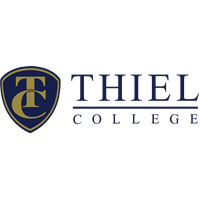Below is a summary of the abstract you submitted. Presenting author(s) is shown in bold.
If any changes need to be made, you can modify the abstract or change the authors.
You can also download a .docx version of this abstract.
If there are any problems, please email Dan at dar78@pitt.edu and he'll take care of them!
This abstract was last modified on March 15, 2022 at 2:11 p.m..

Discovering novel bacteriophages (phages) are an important part in determining the phage population as well as genomic evolution of some of the oldest organisms on earth. A bacteriophage is a virus that infects a host bacterium. Water and soil samples were collected from various locations near Thiel College in Greenville, Pennsylvania. This semester, the SEA-PHAGES protocols of direct and enriched soil sample isolation, as well as, water sample isolation, were followed and several bacteriophages were discovered utilizing the host bacteria Microbacterium foliorum (M. foliorum), a member of the Actinomycetota phylum. The class worked in groups of three to isolate, purify, and amplify their phages. ThirteenKH was discovered by direct soil sample isolation, whereas ROMM, PhillyP, and Kemac were identified following enriched soil sample isolation. Prada and Kevin2 were isolated from a water sample. All phages were purified at least 3 times, amplified and high titer lysates were obtained from several webbed plates. The titers were then calculated from either spot or full plate titers. All titers were able to reach a minimum of 5X10^9.The DNA was then isolated using restriction enzymes and gel electrophoresis. All of these phages have been submitted and accepted by the SEA-PHAGES database. ROMM and ThirteenKH were selected to be sent for sequencing at the University of Pittsburgh because they had DNA concentrations of 363.8 ng/μL and 190.2 ng/μL, respectively. They also had a high quality of DNA that was observed via gel electrophoresis. Once the genomes are sequenced the annotation process will occur in the Fall 2022. We are looking forward to determining which cluster these phages are in or if they are singletons.
